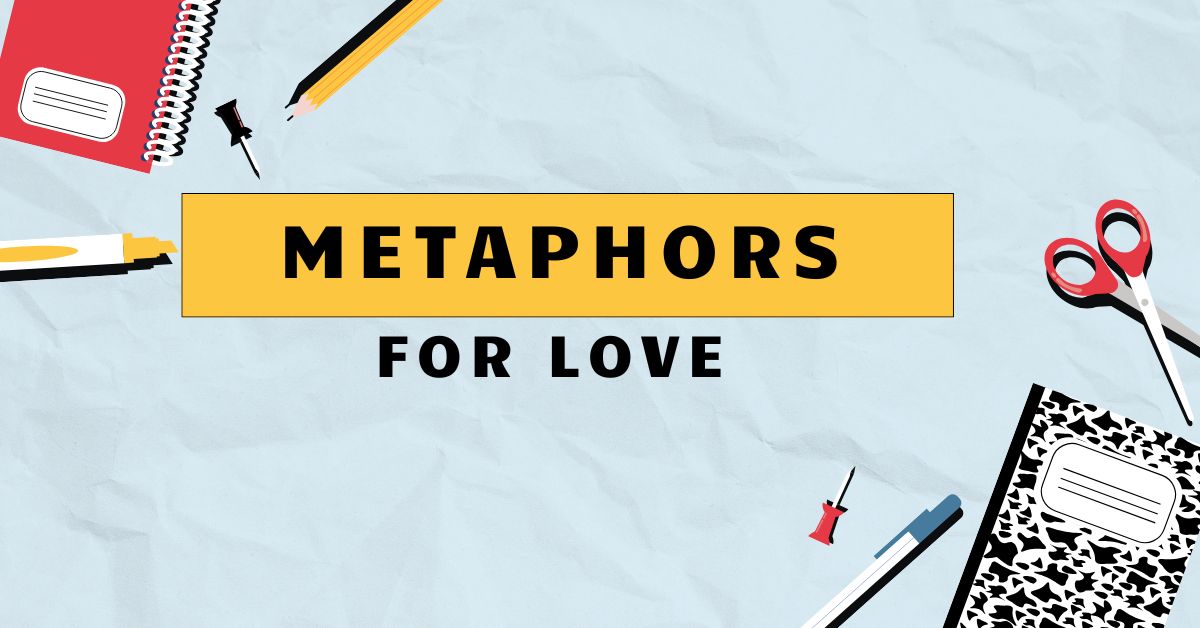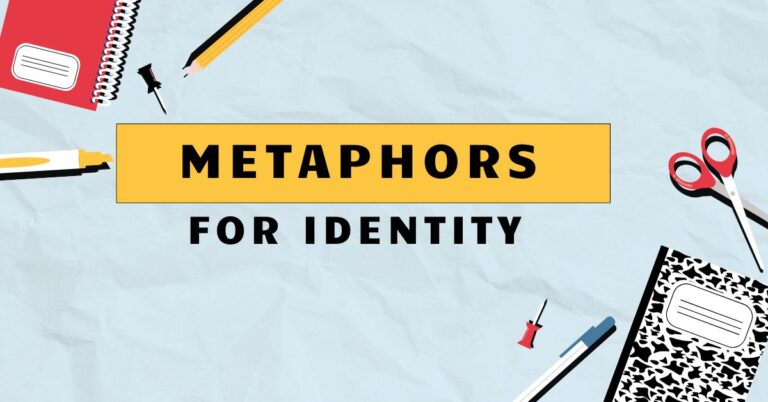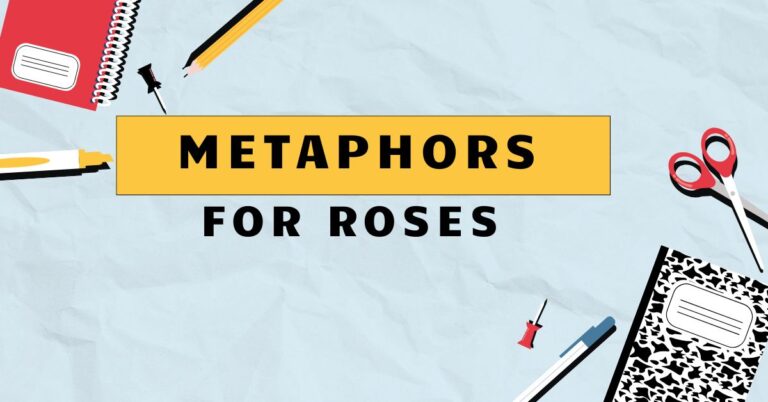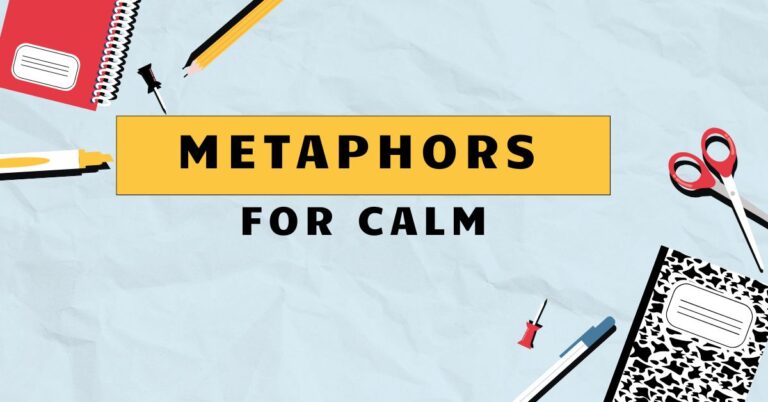45 Love’s True Form: Mastering Metaphors in the English Language
Metaphors are powerful tools that enrich our language, allowing us to express abstract concepts in vivid and relatable ways. When it comes to describing love, metaphors are particularly crucial.
They help us articulate the complex emotions, experiences, and connections that define this universal human experience. Understanding metaphors for love not only enhances our appreciation of literature and poetry but also improves our ability to communicate our own feelings and interpretations of love more effectively.
This article delves into the world of love metaphors, exploring their structure, types, common uses, and potential pitfalls. Whether you’re an English language learner, a literature enthusiast, or simply someone seeking to better understand the language of love, this guide will provide you with the knowledge and skills to master this fascinating aspect of English grammar.
Table of Contents
- Introduction
- Definition of Metaphor
- Structural Breakdown
- Types and Categories of Metaphors for Love
- Examples of Metaphors for Love
- Usage Rules
- Common Mistakes
- Practice Exercises
- Advanced Topics
- FAQ
- Conclusion
Definition of Metaphor
Ametaphoris a figure of speech that directly compares two unrelated things, asserting that they are the same for rhetorical effect. Unlike similes, which use “like” or “as” to make a comparison, metaphors state the comparison directly.
Metaphors are used to add color, depth, and emotional resonance to language, helping us understand abstract concepts in more concrete terms. They are a fundamental part of human communication, appearing in everyday speech, literature, poetry, and even scientific discourse.
Classification
Metaphors can be classified based on their explicitness and function. Explicit metaphors clearly state the comparison, while implicit metaphors suggest the comparison without directly stating it. Conceptual metaphors are underlying cognitive structures that shape our understanding of abstract ideas; for example, “argument is war” is a conceptual metaphor that influences how we talk about arguments.
Function
The primary function of a metaphor is to create a deeper understanding or appreciation of a subject by associating it with something familiar. Metaphors can evoke emotions, create vivid imagery, and simplify complex ideas.
In the context of love, metaphors help us express the ineffable qualities of love, such as its intensity, fragility, or transformative power. They allow us to move beyond literal descriptions and tap into a richer, more evocative language.
Contexts
Metaphors for love appear in various contexts, from romantic poetry and song lyrics to everyday conversations and self-help books. They are particularly prevalent in literature, where authors use them to explore the nuances of romantic relationships, the pain of heartbreak, and the joy of companionship.
In everyday speech, metaphors for love can range from lighthearted expressions to profound declarations of affection. The context in which a metaphor is used significantly impacts its interpretation and effectiveness.
Structural Breakdown
Understanding the structure of a metaphor helps us analyze its meaning and effectiveness. Two key elements of a metaphor are the tenor and the vehicle.
Additionally, the ground provides the shared characteristics that link the tenor and vehicle.
Tenor and Vehicle
Thetenoris the subject of the metaphor – the thing being described. Thevehicleis the object or concept used to describe the tenor.
In the metaphor “Love is a battlefield,” love is the tenor, and battlefield is the vehicle. The vehicle provides a new perspective on the tenor, highlighting certain aspects or qualities.
Ground
Thegroundrefers to the shared characteristics or similarities between the tenor and the vehicle. It’s the basis of the comparison.
In the example “Love is a battlefield,” the ground might include conflict, struggle, vulnerability, and the potential for victory or defeat.
Types and Categories of Metaphors for Love
Metaphors for love can be categorized based on the types of vehicles used to describe love. Each category highlights different aspects of the experience of love.
Nature Metaphors
Nature metaphors use elements of the natural world to describe love. These metaphors often emphasize the growth, beauty, and power of love.
Examples include comparing love to a blossoming flower, a deep ocean, or a towering mountain. Nature metaphors can evoke feelings of peace, wonder, and connection to something larger than oneself.
Journey Metaphors
Journey metaphors depict love as a shared path or adventure. These metaphors often highlight the challenges, rewards, and transformative experiences of being in a relationship.
Examples include describing love as a long road, a winding river, or a voyage across the sea. Journey metaphors emphasize the importance of commitment, perseverance, and mutual support.
War Metaphors
War metaphors portray love as a battle or conflict. These metaphors often emphasize the struggles, sacrifices, and vulnerabilities involved in relationships.
Examples include describing love as a battlefield, a war of attrition, or a strategic alliance. War metaphors can highlight the intensity of emotions and the potential for both victory and defeat.
Light Metaphors
Light metaphors use light and darkness to represent love and its effects. Love can be seen as a guiding light, a source of warmth, or a beacon of hope.
Conversely, the absence of love or the pain of heartbreak can be described as darkness or shadow. These metaphors often emphasize the clarity, hope, and illumination that love brings.
Fire Metaphors
Fire metaphors associate love with fire, emphasizing its passion, intensity, and potential for both warmth and destruction. Love can be described as a burning flame, a smoldering ember, or a wildfire.
Fire metaphors often highlight the consuming nature of love and its ability to transform and purify.
Food Metaphors
Food metaphors depict love as something that nourishes, satisfies, and sustains. These metaphors often emphasize the comfort, pleasure, and essential nature of love.
Examples include describing love as a sweet treat, a hearty meal, or the spice of life. Food metaphors can evoke feelings of warmth, security, and contentment.
Home Metaphors
Home metaphors portray love as a safe haven, a place of comfort, and a sense of belonging. These metaphors often emphasize the security, warmth, and stability that love provides.
Examples include describing love as a home, a sanctuary, or a refuge from the storm. Home metaphors can evoke feelings of peace, security, and acceptance.
Examples of Metaphors for Love
The following tables provide extensive examples of metaphors for love, organized by category. Each example illustrates how different vehicles can be used to describe the complex emotions and experiences associated with love.
Nature Metaphors Examples
The following table illustrates nature metaphors for love, each showing how elements of nature are used to describe love’s qualities.
| Metaphor | Explanation |
|---|---|
| Love is a blossoming flower. | Love is beautiful, delicate, and grows over time. |
| Her love was a deep ocean. | Her love was vast, mysterious, and profound. |
| Their love is a towering mountain. | Their love is strong, enduring, and imposing. |
| Love is a gentle breeze. | Love is soothing, comforting, and refreshing. |
| Love is a raging storm. | Love is intense, turbulent, and overwhelming. |
| Their love is a sturdy oak tree. | Their love is resilient, strong, and deeply rooted. |
| Love is a winding river. | Love is a journey with unpredictable twists and turns. |
| Her love is a warm sunshine. | Her love is radiant, cheerful, and life-giving. |
| Love is a field of wildflowers. | Love is diverse, colorful, and full of life. |
| Their love is a quiet forest. | Their love is peaceful, serene, and full of secrets. |
| Love is the fertile ground where dreams grow. | Love provides the foundation and support for aspirations. |
| His love was the north star in my darkest night. | His love guided and directed me when I was lost. |
| Love is a delicate butterfly. | Love is beautiful and fragile, requiring gentle care. |
| Their love is a sprawling vineyard. | Their love is rich, fruitful, and cultivated over time. |
| Love is the blooming of spring after a long winter. | Love brings renewal and hope after a difficult period. |
| Her love is like the earth, nurturing and constant. | Her love is reliable and supportive, providing essential care. |
| Their love is a vast desert, barren without connection. | Their love lacks emotional sustenance and intimacy. |
| Love is an endless sky, limitless in its possibilities. | Love offers boundless opportunities for growth and exploration. |
| His love is a roaring waterfall, powerful and unstoppable. | His love is intense and overwhelming, with an unstoppable force. |
| Their love is a gentle rain, refreshing and life-giving. | Their love is calming and revitalizing, bringing emotional nourishment. |
| Love is a hidden spring, a source of unexpected joy. | Love can emerge unexpectedly, bringing delightful surprises. |
| Her love is like the moon, a constant presence in the night. | Her love provides comfort and guidance even in challenging times. |
| Their love is a dense jungle, full of mystery and adventure. | Their love is complex and exciting, offering constant exploration. |
Journey Metaphors Examples
The following table shows how journey metaphors illustrate the shared experiences and challenges in love.
| Metaphor | Explanation |
|---|---|
| Love is a long and winding road. | Love involves challenges, detours, and unexpected turns. |
| Their love is a voyage across the sea. | Their love is an adventure with both calm waters and stormy seas. |
| Love is a climb to the summit. | Love requires effort, perseverance, and a shared goal. |
| Their love is a dance. | Love requires coordination, communication, and mutual respect. |
| Love is a marathon, not a sprint. | Love requires endurance, patience, and long-term commitment. |
| Their love is a train journey. | Their love is a shared experience with a destination in mind. |
| Love is a path through the woods. | Love involves exploration, discovery, and occasional obstacles. |
| Their love is a flight to the stars. | Their love is ambitious, aspirational, and full of possibilities. |
| Love is a river flowing towards the sea. | Love is a natural progression with a sense of inevitability. |
| Their love is a pilgrimage. | Their love is a sacred journey with a deeper purpose. |
| Our love is a rollercoaster, full of ups and downs. | Love can be thrilling and unpredictable, with highs and lows. |
| Their relationship is a ship sailing through life’s storms. | Their love faces challenges but remains resilient. |
| Love is like navigating a maze, full of twists and turns but worth the effort. | Love requires patience and determination to find the right path. |
| Their love is an expedition to uncharted lands, exciting and full of discovery. | Their love is adventurous and promises new experiences. |
| Love is a staircase, each step bringing you closer to understanding. | Love involves gradual progress and deeper understanding over time. |
| Their love is a bridge, connecting two souls across a distance. | Their love overcomes barriers and fosters connection. |
| Love is like a map, guiding you through life’s journey. | Love provides direction and purpose. |
| Their love is a treasure hunt, full of clues and discoveries. | Their love is exciting and rewarding as they uncover new aspects of each other. |
| Love is a long hike, challenging but rewarding at the summit. | Love requires effort but leads to satisfaction and fulfillment. |
| Their love is a dance of give and take. | Love requires balance and cooperation between partners. |
| Love is a winding staircase; we learn more with each step. | Love is a process of growth and discovery. |
| Their love is a raft navigating the waters of uncertainty. | Their love faces challenges together, supporting each other. |
| Love is a compass guiding us through life’s journey. | Love provides direction and purpose in life. |
War Metaphors Examples
The following table provides examples of war metaphors, highlighting the conflicts and struggles that can be part of love.
| Metaphor | Explanation |
|---|---|
| Love is a battlefield. | Love involves conflict, struggle, and vulnerability. |
| Their love is a war of attrition. | Their love is a slow, draining conflict with no clear winner. |
| Love is a strategic alliance. | Love is a partnership based on mutual benefit and shared goals. |
| Their love is a constant battle. | Their love is characterized by ongoing disagreements and power struggles. |
| Love is a fight for survival. | Love requires constant effort to overcome challenges and maintain the relationship. |
| Their love is a siege. | Their love is under constant pressure and attack from external forces. |
| Love is a game of strategy, where hearts are the pawns. | Love involves calculated moves and emotional risks. |
| Their love is a fortress, strong against the outside world. | Their love is protected and resilient, shielding them from external threats. |
| Love is a never-ending war, with moments of peace in between. | Love involves ongoing conflicts interspersed with periods of calm and harmony. |
| Their love is a shield, protecting them from life’s harsh realities. | Their love provides emotional protection and support. |
| Love is a minefield, where one wrong step can lead to disaster. | Love requires careful navigation and awareness to avoid causing harm. |
| Their love is an arms race, each trying to outdo the other. | Their love is competitive and driven by a need for validation. |
| Love is a battle for control, where egos clash. | Love involves power struggles and conflicts over dominance. |
| Their love is a fragile truce, easily broken by conflict. | Their love is unstable and prone to disruptions. |
| Love is a siege on the heart; emotions are barricaded. | Love can feel like an invasion of personal space and emotions. |
| Their love is a constant negotiation, where compromise is key. | Their love requires ongoing discussions and agreements to maintain balance. |
| Love is a turf war, each partner defending their territory. | Love can involve conflicts over boundaries and personal space. |
| Their love is a game of chess, each move carefully planned. | Their love involves strategic thinking and calculated actions. |
| Love is a war of words, where emotions are weapons. | Love can lead to hurtful arguments and emotional attacks. |
| Their love is a defensive stand, protecting their vulnerability. | Their love is guarded and cautious, aimed at preventing emotional pain. |
| Love is a battle against loneliness, fought together. | Love provides companionship and support to combat feelings of isolation. |
| Their love is a tug-of-war, each pulling in different directions. | Their love involves conflicting desires and goals. |
| Love is a war for affection, constantly seeking reassurance. | Love can lead to insecurity and a need for constant validation. |
Light and Fire Metaphors Examples
The following table provides examples of light and fire metaphors, illustrating how love can illuminate and ignite.
| Metaphor | Explanation |
|---|---|
| Love is a guiding light. | Love provides direction, hope, and clarity. |
| Their love is a burning flame. | Their love is passionate, intense, and consuming. |
| Love is a beacon of hope. | Love offers encouragement, optimism, and a sense of possibility. |
| Their love is a wildfire. | Their love spreads rapidly and uncontrollably, consuming everything in its path. |
| Love is the spark that ignites the soul. | Love inspires, motivates, and brings passion to life. |
| Their love is a radiant sunrise. | Their love is bright, hopeful, and full of promise. |
| Love is the sun that warms the heart. | Love brings comfort, joy, and emotional warmth. |
| Their love is a slow-burning ember. | Their love is subtle, enduring, and quietly passionate. |
| Love is a candle in the darkness. | Love provides comfort and hope in difficult times. |
| Their love is a lighthouse in a storm. | Their love offers guidance and safety amidst chaos. |
| Love is the warmth of a hearth on a cold night. | Love provides comfort, security, and a sense of belonging. |
| Their love is a bonfire, drawing everyone near. | Their love is inviting, warm, and inclusive. |
| Love is a flickering flame, easily extinguished. | Love is fragile and requires careful attention to survive. |
| Their love is a supernova, exploding with brilliance. | Their love is intense, dramatic, and unforgettable. |
| Love is the light at the end of the tunnel. | Love offers hope and relief after a long period of struggle. |
| Their love is a pilot light, always burning softly. | Their love is constant, reliable, and always present. |
| Love is a spark that can ignite a revolution. | Love has the power to transform and inspire change. |
| Their love is a solar flare, erupting with energy. | Their love is dynamic, explosive, and full of surprises. |
| Love is the flame that forges unbreakable bonds. | Love creates strong, lasting connections between people. |
| Their love is the twilight glow, soft and comforting. | Their love is gentle, peaceful, and reassuring. |
| Love is the inner light that shines through darkness. | Love provides strength and resilience in difficult times. |
| Their love is a blaze that consumes all doubts. | Their love is powerful and overwhelming, dispelling insecurities. |
| Love is the lamp that illuminates the path ahead. | Love guides and directs, making the future clearer. |
Food and Home Metaphors Examples
The following table provides examples of food and home metaphors, illustrating how love can nourish and provide comfort.
| Metaphor | Explanation |
|---|---|
| Love is a sweet treat. | Love is pleasurable, delightful, and satisfying. |
| Their love is a home. | Their love provides comfort, security, and a sense of belonging. |
| Love is the spice of life. | Love adds excitement, flavor, and variety to life. |
| Their love is a sanctuary. | Their love offers refuge, peace, and protection from the outside world. |
| Love is a hearty meal. | Love is nourishing, sustaining, and essential for well-being. |
| Their love is a refuge from the storm. | Their love provides shelter, safety, and comfort during difficult times. |
| Love is the bread and butter of life. | Love is fundamental, essential, and provides basic sustenance. |
| Their love is a warm embrace. | Their love offers comfort, affection, and a sense of security. |
| Love is a comforting soup on a cold day. | Love provides warmth, comfort, and emotional nourishment. |
| Their love is a cozy room with a fireplace. | Their love is inviting, warm, and provides a sense of relaxation. |
| Love is the secret ingredient in a perfect recipe. | Love is essential for creating something beautiful and fulfilling. |
| Their love is a safe harbor. | Their love provides security, protection, and a sense of calm. |
| Love is a feast for the senses. | Love is stimulating, delightful, and enriches the experience of life. |
| Their love is a foundation built to last. | Their love is strong, stable, and designed for long-term commitment. |
| Love is the dessert that makes life worth savoring. | Love is the highlight, the reward, and the source of joy in life. |
| Their love is a haven of peace. | Their love offers tranquility, serenity, and a sense of inner calm. |
| Love is the nourishment that helps us grow. | Love supports, encourages, and fosters personal development. |
| Their love is a shelter from the rain. | Their love provides protection, comfort, and relief during challenging times. |
| Love is the sweetness that balances life’s bitterness. | Love offers joy, pleasure, and a counterpoint to hardship. |
| Their love is a place to call home. | Their love offers belonging, identity, and a sense of self. |
| Love is like a warm cup of coffee on a rainy day. | Love gives comfort and joy in times of distress. |
| Their love is a garden where we can always find refuge. | Their love is a safe and natural space for growth and peace. |
| Love is the main ingredient in a happy life. | Love is essential for a fulfilling and content life. |
Usage Rules
Using metaphors effectively requires careful consideration of appropriateness, consistency, and originality. Overuse or misuse of metaphors can diminish their impact and create confusion.
Appropriateness
Choose metaphors that are appropriate for the context and audience. A metaphor that is too obscure or complex may not be understood, while a metaphor that is too simplistic may not be effective.
Consider the tone and purpose of your communication when selecting a metaphor. For example, a war metaphor may be appropriate for describing a difficult relationship, but it may be inappropriate for expressing tender affection.
Consistency
Maintain consistency within a metaphor. Avoid mixing metaphors that create contradictory or nonsensical images.
For example, “Love is a battlefield where we build bridges” mixes two conflicting metaphors and creates a confusing image. Instead, choose a single metaphor and develop it consistently throughout your communication.
Originality
Strive for originality in your metaphors. Overused or cliché metaphors can lose their impact and sound uninspired.
While familiar metaphors can be effective in certain contexts, creating fresh and original metaphors can add depth and creativity to your communication. Think about the unique qualities of love and try to find novel ways to express them.
Common Mistakes
One common mistake is usingmixed metaphors, which combine incongruous images. For example: “Let’s nip it in the bud before it snowballs.” A bud cannot snowball.
Another error is usingclichéd metaphorsthat have lost their impact through overuse, such as “Love is a rose.” A better, more original metaphor would be, “Love is a newly discovered constellation, illuminating the unknown.”
Another frequent mistake is using metaphors that are too complex or obscure, making them difficult for the audience to understand. Effective metaphors should create clarity, not confusion.
It’s also essential to ensure the metaphor aligns with the overall tone and context. A lighthearted metaphor might be inappropriate in a serious discussion, and vice versa.
Incorrect: Love is a rollercoaster, so let’s put out the fire. (Mixed metaphor)
Correct: Love is a rollercoaster, full of thrilling highs and terrifying lows.
Incorrect: Love is a rose. (Cliché)
Correct: Love is a fragile orchid, requiring constant care and attention.
Practice Exercises
These exercises will help you practice identifying, creating, and analyzing metaphors for love.
Exercise 1: Identifying Metaphors
Identify the metaphors for love in the following sentences and explain what two things are being compared.
| Question | Answer |
|---|---|
| 1. Her love was a warm blanket on a cold winter’s night. | Metaphor: Love is a warm blanket. Comparison: Love is compared to a warm blanket, providing comfort and warmth. |
| 2. Their relationship was a ship sailing through stormy seas. | Metaphor: Relationship is a ship. Comparison: A relationship is compared to a ship, facing challenges and navigating difficulties. |
| 3. Love is a battlefield where hearts are the casualties. | Metaphor: Love is a battlefield. Comparison: Love is compared to a battlefield, involving conflict and potential pain. |
| 4. His love was the anchor that kept her grounded. | Metaphor: Love is an anchor. Comparison: Love is compared to an anchor, providing stability and security. |
| 5. Their love story was a tapestry woven with joy and sorrow. | Metaphor: Love story is a tapestry. Comparison: A love story is compared to a tapestry, made up of different experiences and emotions. |
| 6. Love is a dance, sometimes leading, sometimes following. | Metaphor: Love is a dance. Comparison: Love is compared to a dance, requiring coordination and balance. |
| 7. Her heart was a locked door until he found the key. | Metaphor: Heart is a locked door. Comparison: A heart is compared to a locked door, requiring someone to unlock it and gain access. |
| 8. Love is a garden that needs constant tending. | Metaphor: Love is a garden. Comparison: Love is compared to a garden, requiring care and attention to thrive. |
| 9. Their love was a fragile butterfly, easily crushed. | Metaphor: Love is a butterfly. Comparison: Love is compared to a butterfly, beautiful but delicate and easily damaged. |
| 10. Love is a flame that can either warm or burn. | Metaphor: Love is a flame. Comparison: Love is compared to a flame, with the potential for both positive and negative effects. |
Exercise 2: Creating Metaphors
Create metaphors for love using the following vehicles:
| Vehicle | Possible Metaphor |
|---|---|
| A river | Love is a river, constantly flowing and changing course. |
| A song | Love is a song, a melody that lingers in the heart. |
| A puzzle | Love is a puzzle, piecing together two souls to create a complete picture. |
| A book | Love is a book, each chapter revealing new adventures and understandings. |
| A star | Love is a star, a guiding light in the darkest night. |
| A bridge | Love is a bridge, connecting two hearts across a distance. |
| A tree | Love is a tree, growing stronger and deeper with time. |
| An ocean | Love is an ocean, vast and deep with hidden treasures. |
| A mountain | Love is a mountain, challenging to climb but rewarding at the summit. |
| A fire | Love is a fire, burning with passion and intensity. |
Exercise 3: Analyzing Metaphors
Analyze the following metaphors for love, identifying the tenor, vehicle, and ground.
| Metaphor | Tenor | Vehicle | Ground | Love is a fortress. | Love | Fortress | Security, protection, strength |
|---|---|---|---|---|---|---|---|
| Their love is a fragile dance. | Love | Dance | Delicacy, coordination, balance | ||||
| Love is a compass guiding our way. | Love | Compass | Guidance, direction, purpose | ||||
| Love is a tapestry of shared moments. | Love | Tapestry | Interwoven, complex, beautiful | ||||
| Their love is a garden needing care. | Love | Garden | Growth, nurturing, beauty |
Advanced Topics
For those looking to delve deeper, understanding extended, mixed, and dead metaphors can further refine your command of the English language.
Extended Metaphors
Anextended metaphoris a metaphor that is developed over several lines or even throughout an entire work. It allows for a more complex and nuanced comparison, exploring various aspects of the tenor through the lens of the vehicle.
For example, in a poem, love might be introduced as a “seed” and then further described as it “sprouts,” “grows,” and “blossoms,” with each stage elaborating on the initial comparison.
Mixed Metaphors
Amixed metaphoroccurs when two or more inconsistent metaphors are combined in a single expression. This often results in a nonsensical or humorous effect, as the conflicting images clash.
For example, “We need to iron out the wrinkles before they hatch” combines the metaphor of ironing (smoothing out problems) with hatching (a process involving eggs), creating a confusing and illogical image. Mixed metaphors should generally be avoided in formal writing, as they can undermine clarity and credibility.
Dead Metaphors
Adead metaphoris a metaphor that has become so common that it is no longer recognized as a figure of speech. These metaphors have been used so frequently that they have lost their original figurative meaning and are now understood in a literal sense.
Examples include “falling in love” or “heart of gold.” While dead metaphors can be useful for conveying ideas quickly and efficiently, it’s important to be aware of their origins and avoid overusing them in creative writing.
FAQ
Conclusion
Mastering metaphors for love enhances your ability to express and understand the complexities of this profound emotion. By understanding their structure, types, and usage rules, you can craft more vivid and impactful language.
Whether you’re writing poetry, engaging in everyday conversation, or simply seeking to deepen your appreciation of literature, the knowledge of love metaphors is an invaluable asset. Embrace the power of figurative language, and let your words resonate with greater depth and meaning.







